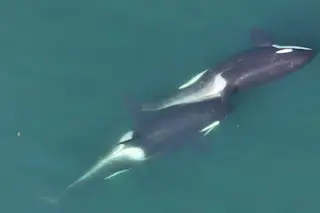Woolly mammoths may all look the same in your average natural history museum display -- the extinct animals are always depicted with the same curly tusks, shaggy hair, and lumbering feet. But researchers have just discovered that they were not all the same, that two genetically distinct groups of mammoths roamed the Siberian plains many millennia ago, and that one group avoided extinction for an extra 30,000 years. Researchers first went in search of tufts of mammoth hair that had been frozen in the permafrost. They then used a new technique that allowed them to read the complete DNA sequence of an animal's mitochondria (an energy-producing organelle within a cell) from a single hair.
The DNA in mitochondria is passed only through the mother’s line, and doesn’t give information about changes in gene function, as nuclear DNA can. But it is useful because it doesn’t change from parent to offspring, ...














